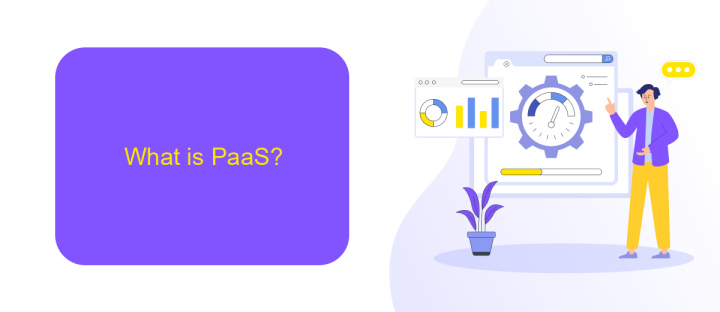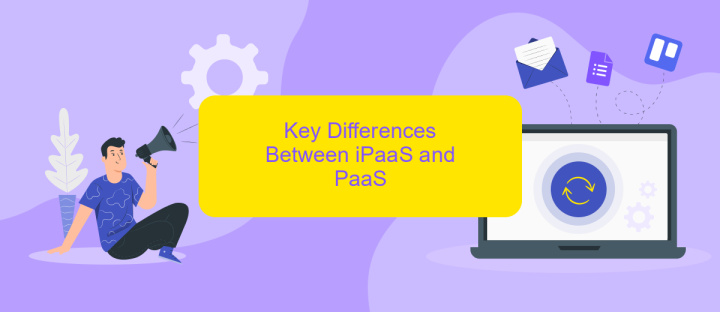What is iPaaS vs PaaS
In the rapidly evolving landscape of cloud computing, understanding the distinctions between Integration Platform as a Service (iPaaS) and Platform as a Service (PaaS) is crucial for businesses aiming to optimize their IT strategies. This article explores the key differences, functionalities, and use cases of iPaaS and PaaS, helping organizations make informed decisions about which solution best suits their needs.
What is iPaaS?
Integration Platform as a Service (iPaaS) is a cloud-based solution designed to connect and integrate various applications, data, and processes across different environments. It enables businesses to streamline workflows and improve data consistency by automating the integration process. iPaaS platforms offer a centralized interface where users can manage and monitor their integrations without the need for extensive coding knowledge.
- Seamless connectivity between cloud and on-premises applications
- Automated data synchronization and transformation
- Real-time monitoring and analytics
- Scalability to handle growing data volumes
- Pre-built connectors and templates for quick setup
One notable example of an iPaaS solution is ApiX-Drive, which provides a user-friendly platform for setting up integrations between various services and applications. With ApiX-Drive, businesses can easily automate workflows, synchronize data, and ensure seamless communication between their software tools. This helps organizations save time, reduce errors, and enhance overall operational efficiency.
What is PaaS?

Platform as a Service (PaaS) is a cloud computing model that provides developers with a platform to build, deploy, and manage applications without worrying about the underlying infrastructure. PaaS offers a complete development and deployment environment in the cloud, with resources that enable developers to deliver everything from simple cloud-based apps to sophisticated, cloud-enabled enterprise applications. Key features of PaaS include development tools, middleware, operating systems, database management systems, and infrastructure.
One of the main benefits of PaaS is that it allows developers to focus on writing code and creating applications rather than managing servers, storage, and networking. This can significantly speed up the development process and reduce costs. Additionally, PaaS platforms often come with built-in tools for integrating various services and APIs, such as ApiX-Drive. ApiX-Drive simplifies the integration process by allowing users to connect different applications and automate workflows without needing extensive coding knowledge. This makes it easier for businesses to streamline their operations and enhance productivity.
Key Differences Between iPaaS and PaaS

While both iPaaS (Integration Platform as a Service) and PaaS (Platform as a Service) offer cloud-based solutions, they serve different purposes and cater to distinct needs within an organization.
- Functionality: iPaaS focuses on integrating various applications and data sources, enabling seamless data flow between them. In contrast, PaaS provides a development platform for building, testing, and deploying applications.
- Target Users: iPaaS is designed for businesses that require robust integration capabilities, often used by IT teams and business analysts. PaaS, on the other hand, is aimed at developers who need a comprehensive environment to develop and manage applications.
- Customization: iPaaS solutions like ApiX-Drive offer pre-built connectors and templates for quick integration setup, reducing the need for custom coding. PaaS offers more flexibility for custom application development, allowing developers to write and deploy their own code.
In summary, iPaaS is ideal for organizations looking to streamline their integration processes without extensive coding, while PaaS offers a robust environment for developers to create and manage applications from scratch. Choosing between the two depends on the specific needs and technical expertise of the organization.
Which One to Choose: iPaaS vs PaaS?

Choosing between iPaaS and PaaS depends on your specific business needs and technical requirements. iPaaS (Integration Platform as a Service) is ideal for organizations that need to integrate multiple applications and data sources quickly and efficiently. On the other hand, PaaS (Platform as a Service) is more suited for businesses that require a comprehensive platform for developing, testing, and deploying applications.
When deciding which one to choose, consider the following factors:
- Integration Needs: If your primary goal is to streamline integrations between various software applications, iPaaS solutions like ApiX-Drive can be highly beneficial.
- Development Requirements: If you need a robust environment for application development and deployment, PaaS offers the necessary tools and infrastructure.
- Scalability: Evaluate the scalability options provided by both platforms to ensure they align with your growth plans.
- Cost: Compare the cost-effectiveness of each solution based on your budget and long-term needs.
Ultimately, the choice between iPaaS and PaaS should be guided by your organization's specific objectives and technical landscape. For seamless integrations, iPaaS platforms like ApiX-Drive can offer significant advantages, while PaaS is ideal for comprehensive application development and management.
Conclusion
In summary, both iPaaS and PaaS offer distinct advantages tailored to different business needs. iPaaS excels in providing seamless integration solutions, enabling businesses to connect various applications and data sources efficiently. On the other hand, PaaS focuses on offering a robust platform for developing, deploying, and managing applications, making it ideal for developers seeking to streamline their workflows and reduce infrastructure complexities.
Choosing between iPaaS and PaaS depends on your organization's specific requirements. For businesses looking to simplify their integration processes, services like ApiX-Drive can be invaluable, offering user-friendly tools to automate and manage integrations effortlessly. Conversely, if your primary goal is to enhance your application development capabilities, PaaS provides the necessary infrastructure and tools to accelerate innovation. Ultimately, understanding the unique benefits of each solution will help you make an informed decision that aligns with your strategic objectives.
FAQ
What is the main difference between iPaaS and PaaS?
Can iPaaS be used for automating workflows?
Is coding knowledge required to use iPaaS solutions?
How does iPaaS handle data security?
Can iPaaS integrate with legacy systems?
Routine tasks take a lot of time from employees? Do they burn out, do not have enough working day for the main duties and important things? Do you understand that the only way out of this situation in modern realities is automation? Try Apix-Drive for free and make sure that the online connector in 5 minutes of setting up integration will remove a significant part of the routine from your life and free up time for you and your employees.

